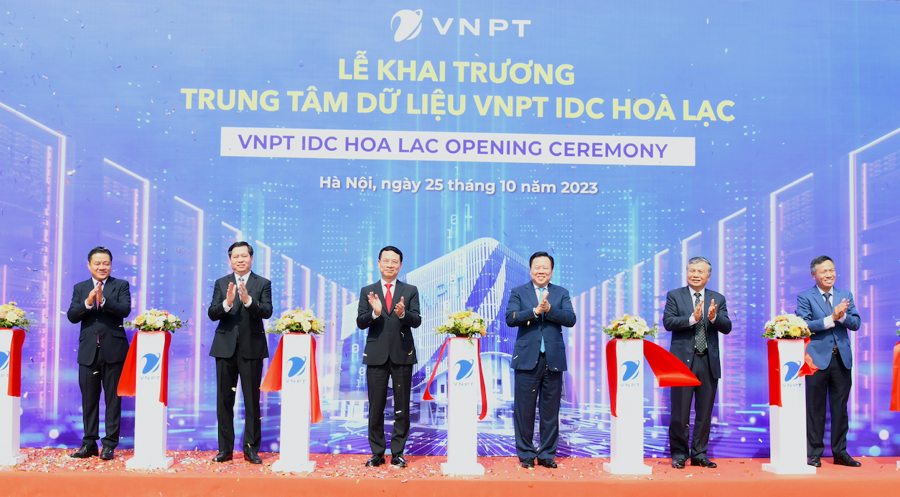Data centricity - the pivot of your future strategy
To become data-centric, Asia-Pacific’s FIs need to view the value of data as equal to raw materials or sales. This will require significant investment for many organisations, but it will enable them to outperform competitors who have not transformed their business models.
 |
| Sayantan Choudhury, partner, Technology Consulting EY Consulting Vietnam |
Data centricity is the use of data as a shared asset to create intelligence and insights for customers and stakeholders, and to continuously improve decisions, processes, products, and services. According to a EY Tech Horizon 2022 survey, only 16 per cent of organisations say that they are data-centric today, although that percentage seems to be increasing.
Regulators across jurisdictions now expect FIs to share increasingly granular data, faster and at a greater frequency. FIs are also faced with data privacy regulations such as those on personal data protection, which took effect in July. To comply, FIs are required a streamlined and tech-enabled digital core, with data at the centre.
The survey reveals that data and analytics is the second-highest area of tech investment within the Asia-Pacific FIs (behind blockchain) and investment has been growing since 2020. However, only 8 per cent of FIs in Asia-Pacific describe themselves as data-centric today, despite the clear advantages of a data-first approach.
For many companies, data exists as isolated bits of information. Only a fraction of structured data is used, and only a sliver of unstructured data. That which is used – quarterly financials and monthly sales reports – is often out-of-date. Silos not only block interoperability and integration – they block insight at the enterprise level and create conflicting data. Many firms ask if they can trust the insights they generate from data because all too often they see conflicting data due to poor governance and management.
With the empowerment of AI and machine learning, data will no longer remain static. AI systems, combined with machine learning, are transforming data so that it will learn, cleanse itself, and pull in additional data as customers and market conditions change.
Data will move from static to real-time across a vast array of devices, internal sources and external sources. This isn’t just making reports more current – the low latency of 5G systems and the internet of things (IoT) will open the gates to a flood of innovations. As examples, autonomous cars used to be something in a science fiction movie and remote, technology assisted surgery was thought of as mind-bending. Both are now in practice.
While the benefits will be profound, there will also be important challenges as per the findings in our survey. Almost all companies report a significant data and technology barrier to executing their transformation. The executives surveyed cited the high cost of technology as the number one challenge (35 per cent of all tech challenges) to achieving transformation. Cost drivers include the greater scale of data, the need for higher computational power, and increased consumption commitments to cloud service providers.
While costs are rising, they are also being mitigated by greater efficiencies in the hyper-convergence and virtualisation of existing infrastructure. By adopting modern data platforms and progressively decommissioning the old legacy systems, companies gain a significant cost reduction in their IT infrastructure.
The great accessibility of data centricity – by employees, suppliers, customers, and others – also presents the challenge of building complex security and privacy requirements, cited as the second-greatest challenge (27 per cent of respondents). The data-centric organisation must not only deepen its cyber-security offensive and defensive measures, but it must also spread the net to cover a diverse set of players.
A key operational challenge of data centricity is the complexity of connecting and integrating diverse data systems (the third-greatest challenge, cited by one-quarter of respondents) – a key contributor to the cost of technology.
It goes beyond simple cost metrics. To develop true data centricity, it is necessary to aggregate and curate data from thousands of enterprise information systems, suppliers, customers, markets, and regulators, as well as internal control systems, IoT devices, and sensor networks.
Furthermore, an increasing number of organisations are developing data strategies that offer opportunities for new revenue-generating operating models, including those where they are commercialising their data. One of the emerging opportunities in this area are those where data ecosystems are created across organisations to sell curated data sets and models or insights that have been trained using an ecosystem of data.n
*The views reflected in this article are those of the author and do not necessarily reflect the views of the global EY organisation or its member firms.
 | Unlocking the potential of digital data across Vietnam Vietnam has been developing e-government since 2000. After 20 years, we began to move into the digital transformation phase marked by the National Digital Transformation Programme, building digital government, digital economy, and digital society. |
 | VNPT opens Vietnam's largest data centre Vietnam Posts and Telecommunications Group (VNPT) inaugurated its eighth and largest data centre at the Hoa Lac High-Tech Park on October 25, marking a significant leap in Vietnam's data infrastructure capacity. |
What the stars mean:
★ Poor ★ ★ Promising ★★★ Good ★★★★ Very good ★★★★★ Exceptional
Related Contents
Latest News
More News
- Pivotal stage of growth paves way for rise in M&As (December 03, 2025 | 10:00)
- Positive projections for M&A interest from Thailand (December 03, 2025 | 09:40)
- Manifesting the first line of defence in cybersecurity (December 03, 2025 | 09:00)
- The transformational role AI can play in accounting arena (December 03, 2025 | 08:00)
- Unlocking 5G-AI potential in Singapore (December 03, 2025 | 08:00)
- Data-driven strategies vital for a fast-evolving nation (December 02, 2025 | 09:41)
- Policy to practice: how Vietnam can lead the region (November 26, 2025 | 16:03)
- Mobilising private capital at scale vital for climate battle (November 26, 2025 | 15:36)
- VILAF and Yoon & Yang launch Vietnam - Korea Practice Unit (November 26, 2025 | 15:16)
- Trademark disputes challenge foreign firms in Vietnam (November 24, 2025 | 15:30)

 Tag:
Tag:






















 Mobile Version
Mobile Version